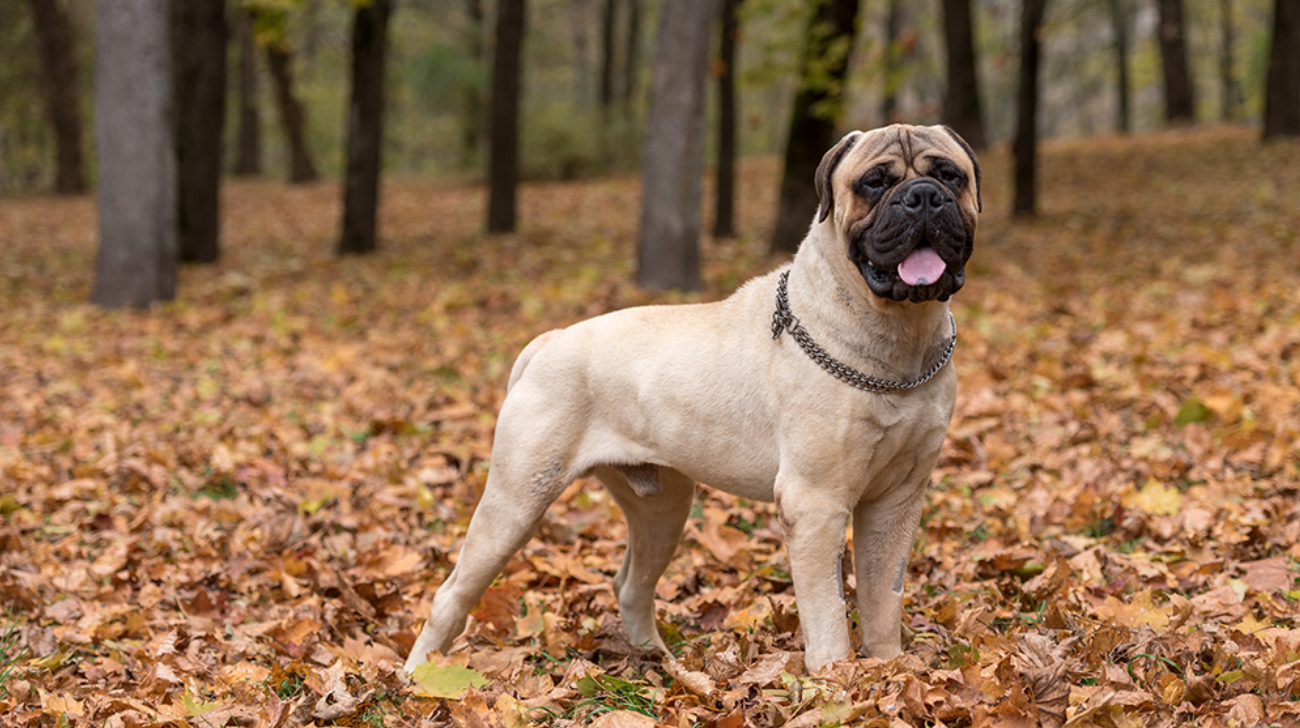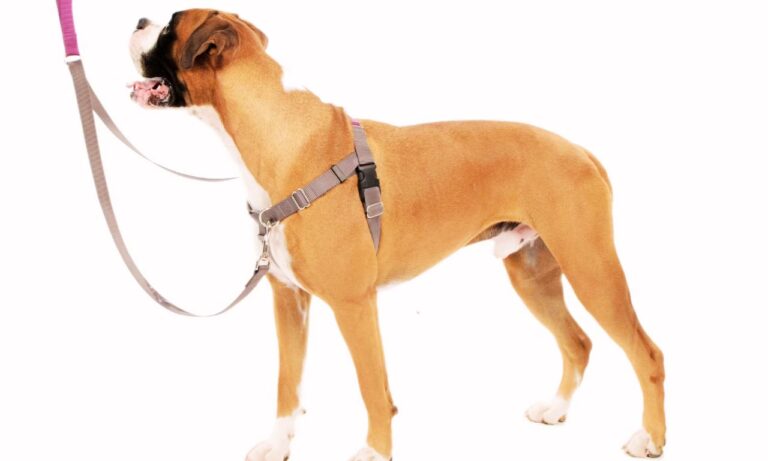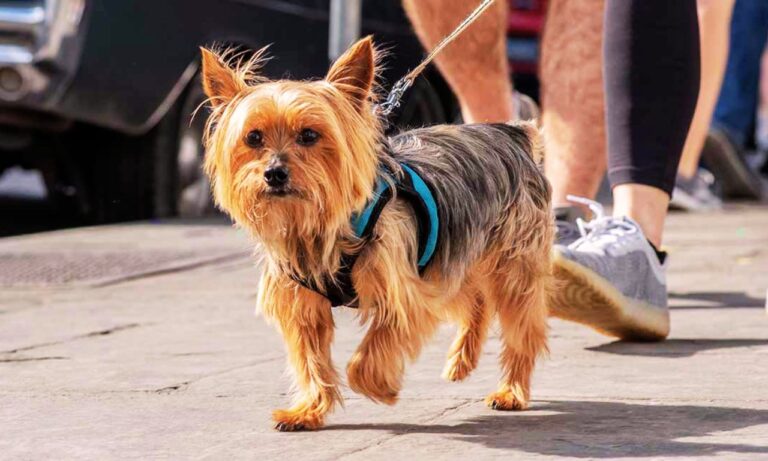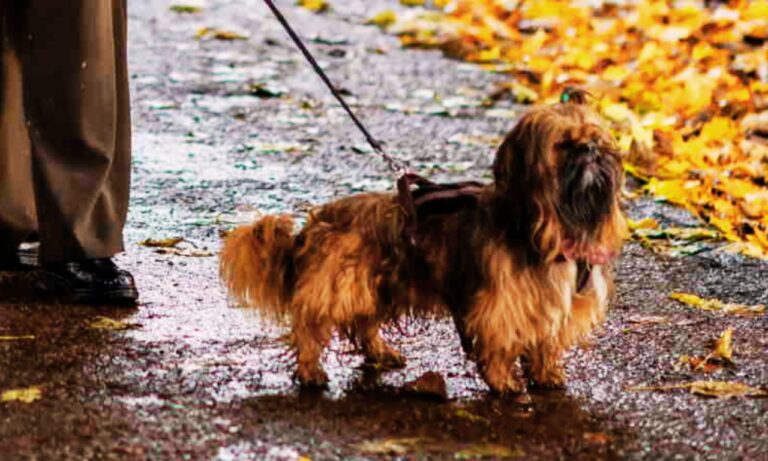So, are Collars Better Option for Bullmastiff? Selecting the right equipment for controlling and training a Bullmastiff can be challenging due to the breed’s size, strength, and unique temperament. Collars and harnesses each have distinct benefits and limitations.
Below is a detailed discussion that explores when collars are advantageous, when harnesses may be more appropriate, and how to make an informed choice. For detailed guidance on ensuring the perfect collar fit for your St. Bernard, check out the Best Practices for St. Bernard Collar Adjustment to keep your dog comfortable and secure.
Blog Highlights
ToggleAre Collars Better Option for Bullmastiffs?
Bullmastiffs are large, muscular dogs that require a balance between control and comfort. Using improper equipment can cause discomfort, increase injury risks, or make training less effective. Owners must understand the pros and cons of collars and harnesses to keep their Bullmastiff safe and manageable. Learn more about the unique double-layered coat of an Anatolian Shepherd and how to care for it effectively.
Quick Comparison Table: Are Collars Better for Bullmastiffs?
Advantages of Using Collars for Bullmastiffs
1. Convenient for Identification Tags
Collars are ideal for displaying identification tags, such as nameplates or medical tags, which is essential if the dog wanders off. Collars allow owners to easily attach GPS devices, ensuring that Bullmastiffs can be tracked in case of an emergency.
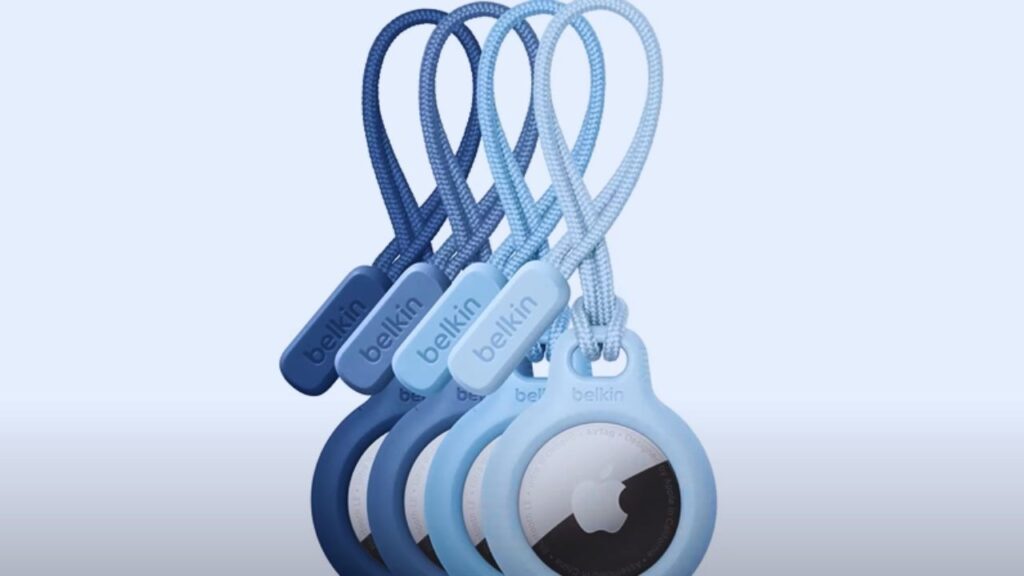
2. Effective for Training and Basic Control
Flat collars, martingale collars, and other specialized options provide owners with a simple way to control Bullmastiffs during basic training sessions. These collars allow for gentle corrections, reinforcing important commands like “sit,” “stay,” and “heel” without excessive equipment.

3. Minimal Restriction on Movement
Compared to harnesses, collars are less intrusive and allow for more natural movement. Many Bullmastiffs, especially those accustomed to collars from an early age, prefer the simplicity of wearing one during routine walks. For insights on whether Pomeranians should wear a collar, including considerations for safety and alternatives, check out this informative article.
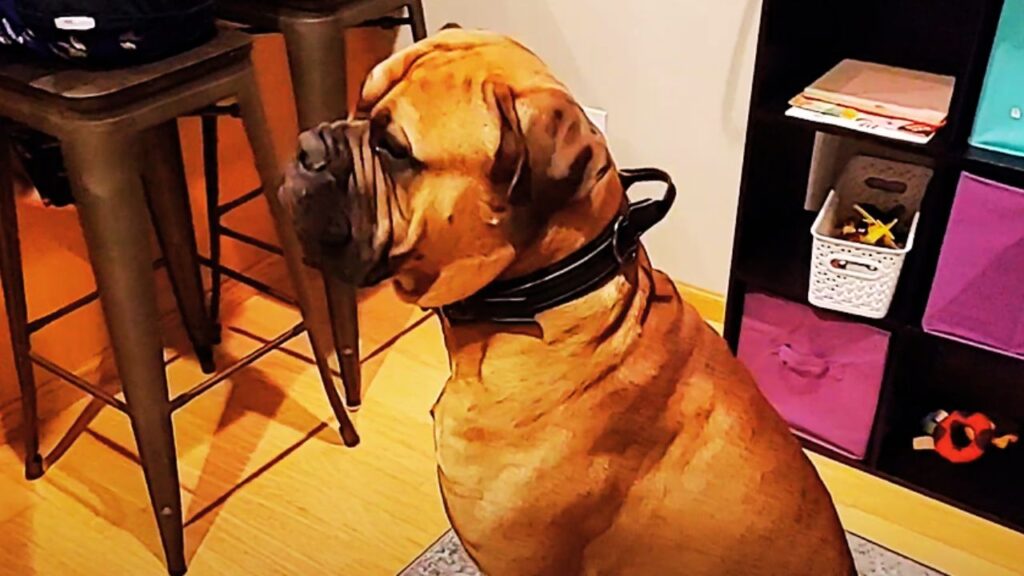
4. Lightweight Option for Calm Dogs
For Bullmastiffs that are calm and obedient, a collar offers a lightweight option that keeps them comfortable during shorter activities. Collars are also easier to put on and remove compared to harnesses, making them ideal for quick outings or trips to the vet.
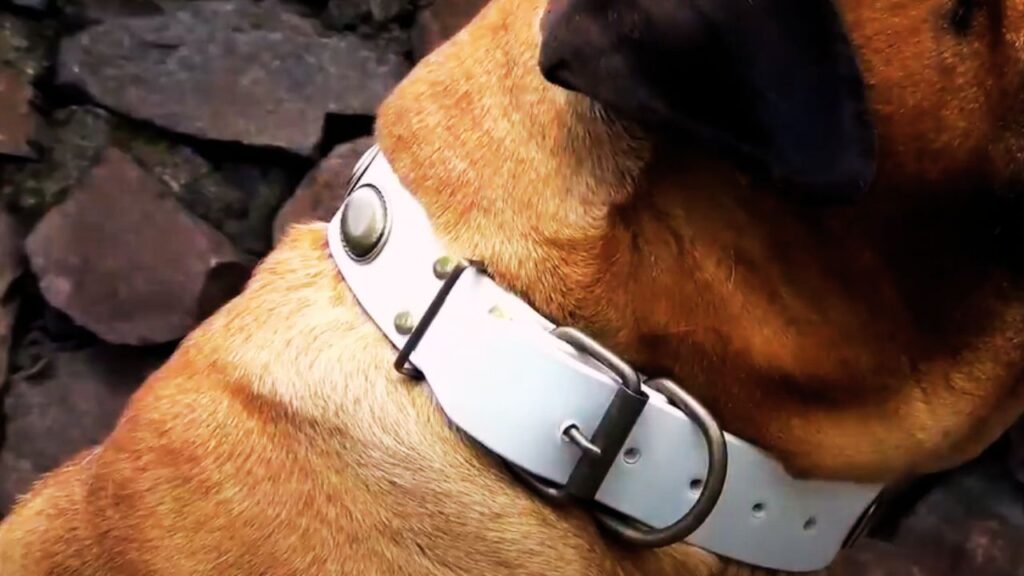
Drawbacks of Using Collars
1. Risk of Neck and Throat Injuries
Bullmastiffs are powerful dogs, and if they pull on the leash, a collar can put pressure on the neck and increase the risk of injury. Dogs with respiratory issues, such as brachycephalic breeds or individuals with previous neck injuries, should avoid wearing collars exclusively.

2. Limited Control for Strong Pullers
While collars work well for basic control, they may not be the best option for dogs prone to pulling or lunging. Given their size and strength, Bullmastiffs can easily overpower an owner if a collar alone is used.

3. Potential for Skin Irritation
Poorly fitted collars can lead to chafing and irritation. Owners must regularly check that the collar fits correctly and is made from suitable materials to prevent discomfort. For a comprehensive guide on what kind of harness is best for a Pomeranian, including comfort and safety tips, check out this article.

When to Use a Harness for a Bullmastiff
1. Better for Health and Safety
A harness distributes pressure more evenly across the Bullmastiff’s chest and shoulders, minimizing the risk of neck injuries. This is especially beneficial for dogs prone to pulling or those with respiratory problems.
2. Improves Control and Reduces Pulling
Front-clip harnesses are designed to discourage pulling by redirecting the dog’s movement back toward the handler. This added control can be crucial when managing a large breed like a Bullmastiff during outdoor activities.
3. Ideal for Active Dogs and Longer Walks
Harnesses offer more support, making them better suited for long walks, hikes, or runs. They allow Bullmastiffs to move freely without placing unnecessary strain on the neck, promoting both comfort and safety.
Combination Approach: When to Use Both a Collar and Harness
Many owners find that using both a collar and a harness offers the best of both worlds. For instance:
- Everyday Use: Keep an ID collar on the dog at all times to ensure identification.
- Training or Walks: Use a harness when going on longer walks or during training sessions that require more control.
This approach ensures that the dog’s health and safety are prioritized while still maintaining basic identification and control needs.
How to Choose the Right Collar for Your Bullmastiff
1. Measure the Neck Properly
To select the right collar size, use a measuring tape and wrap it around the base of the Bullmastiff’s neck. Leave enough space to fit two fingers between the collar and the dog’s neck to ensure a snug but comfortable fit.
2. Choose Durable Materials
Given the strength of Bullmastiffs, collars should be made from high-quality materials like leather, nylon, or neoprene. Padded collars can also reduce irritation and improve comfort during extended wear.
3. Check for Safety Features
Collars with quick-release buckles are ideal, as they can be easily removed in emergencies. Reflective strips or LED lighting features also enhance visibility during nighttime walks, ensuring the safety of both the dog and the owner. Discover if the American Eskimo is a guard dog and learn about its suitability for protecting your home.
Safety Considerations
Regardless of whether you choose a collar, harness, or both, safety is paramount:
- Inspect Regularly: Check for signs of wear, such as fraying or loose buckles, to ensure the collar or harness remains safe to use.
- Avoid Leaving Collars On Unattended Dogs: There is a risk of the collar getting caught on objects, leading to injury.
- Monitor for Skin Issues: Regularly inspect your Bullmastiff’s neck and chest for signs of irritation or discomfort caused by collars or harnesses.
Harness vs. Collar: Which One Works Best for Bullmastiffs in Different Scenarios?
The decision to use a collar or a harness depends on your Bullmastiff’s lifestyle, health, and behavior. Both options have their pros and cons, but understanding which to use in specific scenarios can help you maximize safety, comfort, and control.
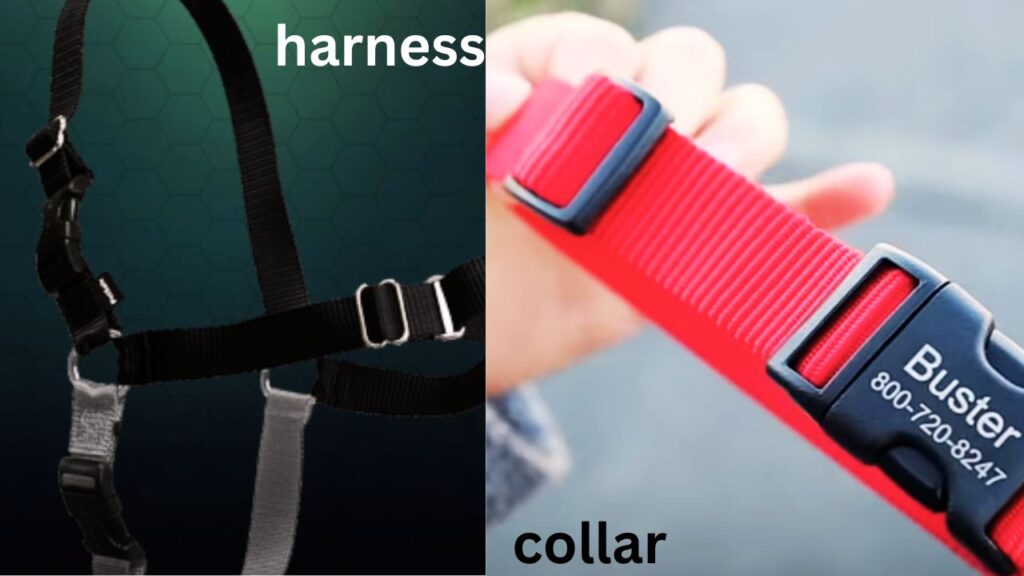
I’ll explore how different situations may affect your choice, providing insights into when collars or harnesses are the better option. Learn about the size collar for an American Eskimo to ensure a perfect fit and comfort for your dog.
1: Routine Walks and Short Outings
For calm Bullmastiffs who are used to walking on a leash without pulling, a flat or martingale collar is generally sufficient. The collar provides easy attachment for a leash, and it’s lightweight, allowing the dog to move freely without feeling restricted. Collars are also convenient for quick trips, such as a visit to the vet or a short neighborhood walk.
However, it’s crucial to monitor for any signs of irritation or chafing, especially if the collar is worn for extended periods. In these situations, padded or leather collars tend to work best as they offer additional comfort and durability without compromising functionality.
2: Long Walks, Hiking, or Outdoor Adventures
When engaging in activities like hiking, jogging, or long walks, a harness is often the better option. Bullmastiffs are strong dogs, and using a harness distributes pressure evenly across their chest and shoulders. This prevents strain on the neck and reduces the risk of injury if the dog pulls or becomes overly excited. A front-clip harness can also discourage pulling by redirecting the dog’s attention back toward the owner.
Additionally, harnesses with reflective strips or built-in handles offer enhanced safety and control, especially during off-road activities or night walks. The handle provides the owner with an additional way to restrain the dog if needed, which can be particularly helpful given the Bullmastiff’s size and strength.
3: Training Sessions and Behavioral Control
For basic obedience training, collars such as flat collars or martingale collars offer more precise control. These collars provide subtle corrections to reinforce commands, helping the dog learn desired behaviors without causing harm. Martingale collars, which gently tighten when the dog pulls, can be useful for Bullmastiffs that need extra guidance during leash training.
Training sessions that involve more physical activities may benefit from a combination of a collar and a harness. While the harness ensures safety and control, the collar can still serve as an anchor for ID tags and quick leash corrections when necessary. Discover why Afghan Hound collars are wide by exploring the unique characteristics of this breed and how wide collars enhance their comfort and style.
4: Managing Pulling Behavior and Leash Reactivity
If your Bullmastiff has a tendency to pull or reacts strongly to distractions like other animals or people, a harness is often the better choice. Front-clip harnesses discourage pulling by steering the dog back toward the owner, making it easier to maintain control during walks. This type of harness prevents the dog from lunging forward, distributing pressure evenly across the chest instead of concentrating it on the neck.
Using a collar in these cases may not provide adequate control and can even increase the risk of injury. Some Bullmastiffs respond well to harness training combined with positive reinforcement techniques, such as treats and praise, to gradually reduce pulling behavior.
5: Medical or Health Considerations
If your Bullmastiff has any neck or respiratory conditions, a harness is the safer option. Dogs with brachycephalic traits (short snouts) or pre-existing health issues may experience difficulty breathing when pressure is applied to the neck area. A harness ensures that there is no added strain on the throat, allowing your dog to breathe comfortably during physical activities.
Similarly, older Bullmastiffs or those recovering from injury may benefit from the additional support provided by a harness. The even distribution of weight helps reduce pressure on joints, making walks more comfortable.
Conclusion: Is a Collar the Better Option for Bullmastiffs?
There is no one-size-fits-all answer. Both collars and harnesses have distinct advantages and limitations, and the best choice depends on your Bullmastiff’s needs and behavior. For everyday identification and basic control, a well-fitted collar works well. However, if your dog pulls on the leash or has respiratory concerns, a harness offers better safety and control. Find out what style dog collar is best for hounds to ensure comfort and safety for your furry friend.
Using both a collar and harness depending on the situation is often the most practical solution. Consulting with a veterinarian or professional trainer can also help you determine which option best suits your Bullmastiff’s unique requirements, ensuring a happy and healthy life for your pet. Hope so, now you know the answer: Are Collars Better Option for Bullmastiff?

